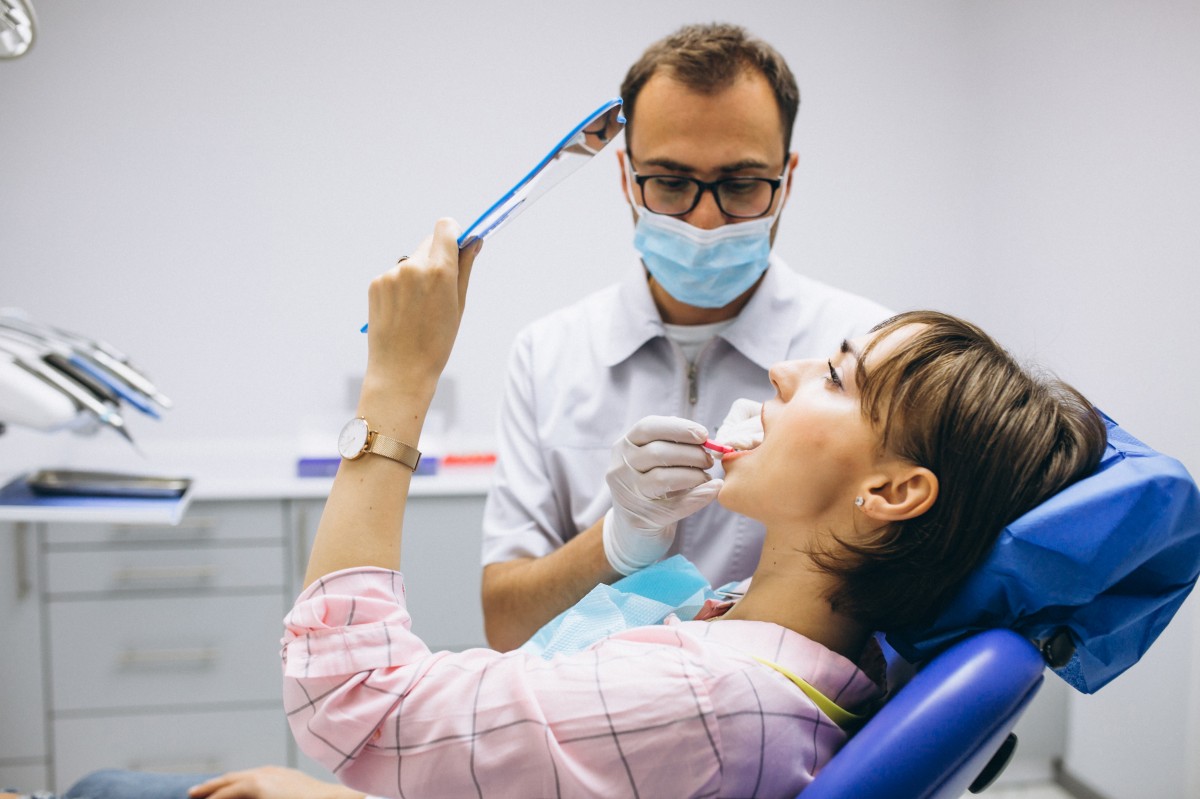Having a piece of a tooth break off and fall out is certainly startling. And if there is pain or blood involved, it is definitely considered a dental emergency. Even if it doesn’t hurt or bleed, a cracked tooth or chipped tooth should be seen by a dentist. The amount of urgency, however, depends on the type and severity of the problem.
It can be dangerous to ignore a break in a tooth. Just like a cavity, a crack can allow bacteria to get inside and work its way to the root and cause an infection or abscess. But a shallow crack or chip isn’t always an emergency. Here is a guide to determining if your broken tooth can wait for your next checkup, for a few days, or if it needs immediate attention.
Symptoms and Causes of a Broken Tooth
In some cases, people will know immediately that a tooth has cracked or broken. They will feel it crack and might find a piece of the tooth in their mouth. This could happen if they have bitten down on something hard like ice. It might also occur as a result of being hit in the mouth during a car accident, a fall, or even a fistfight.
Other incidents that can crack or chip a tooth are not as easily identified. Grinding teeth at night, called bruxism, can create fractures in teeth. Having a very large filling can affect the structure of a tooth and make it weak and brittle and possibly snap off. Old fillings and restorations can cause cracking as they start to pull away from the tooth and come loose. Aging, in general, can make teeth more fragile and easy to break.
Aside from feeling a space or jagged edge where a piece of tooth fell off, there might also be pain. It might come and go instead of being constant. This will often be accompanied by sensitivity to hot, cold, or sweet food and drinks. If the break is deep, it may bleed. There could also be some swelling around the affected tooth.
Determining whether a chip or crack is an emergency depends on the severity of the symptoms. The worse the pain and sensitivity, the more likely it is that the break has affected the root where the nerves and blood vessels are. The patient should get in to see a dentist right away to get it fixed.
If there is no pain, bleeding, or swelling, it is probably not an emergency. Even so, if there is a sharp edge left behind, it can cut the cheek or gums and make it hard to eat or talk. If it’s in a front tooth, it could be noticeable to others. A dentist should definitely be consulted, but it can probably wait a while to get fixed.
What to Do Until You Can See a Dentist

If a piece of tooth falls out, it’s a good idea to save it to show the dentist. It can not be reattached (although if a tooth comes out completely, there is a chance it can be saved) but the dentist might want to see if it was tooth enamel or filling material. If it’s bleeding, bite down gently on a clean piece of gauze.
Pain and discomfort can be treated the same as any toothache with over-the-counter pain relievers and topical anesthetics. Rinsing with warm salt water can be soothing and some people swear by clove oil. A small piece of orthodontic wax or dental cement can fill in a gap or smooth over a rough or sharp edge.
All of these DIY methods should be considered temporary remedies. An appointment still needs to be made with a professional to take a look and fix the problem.
Diagnosing a Chip or Crack

Some breaks are obvious, but others can be harder to see without special tools. Some teeth have very tiny cracks that don’t even show up on an X-ray. Luckily these don’t need any treatment.
When a patient thinks they may have cracked a tooth, a dentist may use a magnifying lens to see it. They might also run a dental instrument gently over the tooth. They might be able to feel the break. There are also dental dyes that will highlight the location of the crack.
Once the dentist finds the location and extent of a crack or chip, they can determine the best way to treat it. Cases of extensive damage will often be referred to an endodontist, a specialist in treating tooth roots. Both a dentist and endodontist will do what they can to save the tooth.
Treatment for a Chipped Tooth
A chip in a tooth can be so small that the patient doesn’t even notice at first. I can also be so large that half of the tooth snaps off. How they are treated depends on their size and how much of the tooth is gone.
Small chips. If a tiny piece of a tooth chips off, the dentist might be able to simply smooth out the edges so they are not sharp. If the chip is a little bigger, but only affects the outer enamel layer, he or she will use normal filling material to fill the space. If the chip is in a front tooth that is visible, they will suggest a porcelain or resin composite filling so the material will match the natural tooth color. Veneers, also called bonding, are another option. Because they are usually just cosmetic, small chips are not typically considered dental emergencies.
Large chips. If a larger piece of the tooth breaks off, but the root is not harmed, a crown will usually be recommended. Created to look and feel natural, a crown or cap fits over what’s left of the original tooth. Because the root is intact, a large chip is not usually an emergency. But if it interferes with chewing or has very sharp edges, the patient will want to visit the dentist sooner rather than later.
Chips that damage the root. If a tooth breaks off all the way at its base, a root canal procedure may save the tooth. The pulp, made up of nerves and blood vessels, is removed from the center of the tooth and a crown is placed on top. In the worst cases, the tooth might not be able to be saved and it will need to be pulled. These types of chips are often painful and may bleed. Emergency treatment is called for.
Treatment for a Cracked Tooth

Cracked teeth can be one of five different types. Some are dental emergencies and some are not.
Craze Lines. Craze lines are superficial hairline cracks in the enamel that often come with age. There is no pain involved, and they don’t really need to be treated at all. If they are in a noticeable area of the mouth, however, the dentist can polish out the rough edges.
Fractured Cusp. Cusps are the tips or bumps on teeth. A fractured cusp is a crack on the chewing surface of the tooth. A part of the cusp might break off or it might not. Often these fractures occur around an old filling that is starting to come loose. These cracks usually don’t extend to the root and there is little or no pain. The dentist will typically replace the filling. If the filling is taking up more than half of the tooth, a crown will probably be recommended. This type of crack is not an emergency, but since there is a risk of a loose filling, the patient shouldn’t wait too long.
Cracked Tooth. A cracked tooth starts at the chewing surface and spreads all the way down to the gum line. This type of crack can be very painful and should be considered an emergency. If it doesn’t extend past the gum line, it can usually be repaired with a crown. If it extends past the gum line all the way to the root, it may be more difficult to save it. The depth of the crack will determine the chances. A root canal may work, but extraction might be the only answer.
Split Tooth. If a crack is deep enough, it could break the tooth into two pieces, resulting in a split tooth. A tooth can split immediately with a strong impact or may happen if a cracked tooth is left untreated. This is a dental emergency, and, unfortunately, the dentist will most likely have to pull the tooth.
Vertical Root Fracture. A vertical root fracture occurs when there is a crack in the root of the tooth. There is often only mild pain or no symptoms at all, but the problem can show up on an X-ray. It is usually the result of a root canal procedure where a large portion of the dentin (a softer layer or tooth beneath the hard enamel outer layer) has been removed, making the tooth weak. Since the dentist will most likely be the one to discover a vertical root fracture, they can determine how urgent it is to have it repaired.
Don’t Ignore a Chipped Tooth or Cracked Tooth
Ignoring a broken tooth can lead to an infection that will be more painful and expensive to fix. Or a tooth might need to be extracted when quicker action could have saved it.
Chipping and cracking are not normal for healthy teeth. Even the smallest break should be evaluated by a dentist. If you need to find one in your area, you can use our online search tool.


